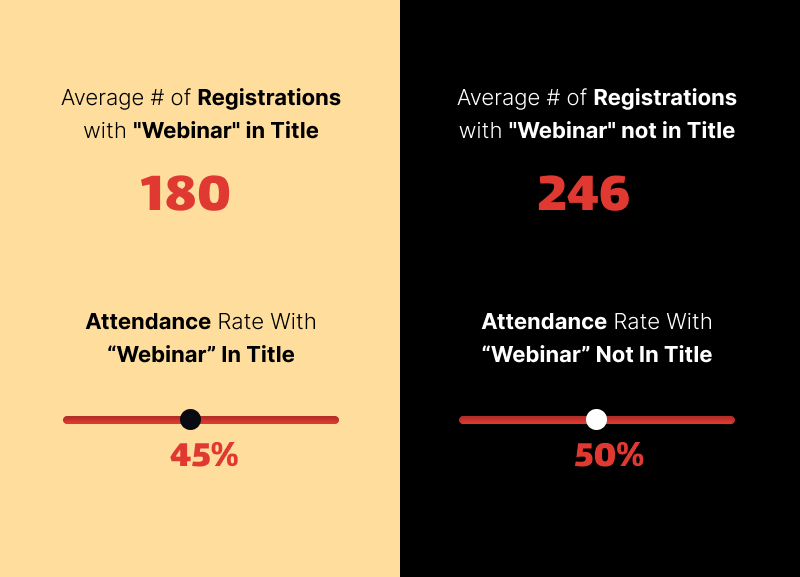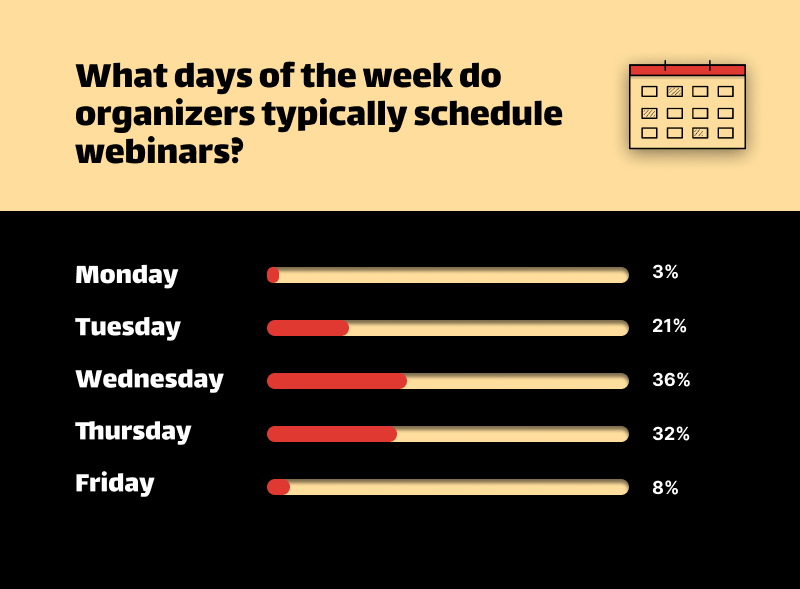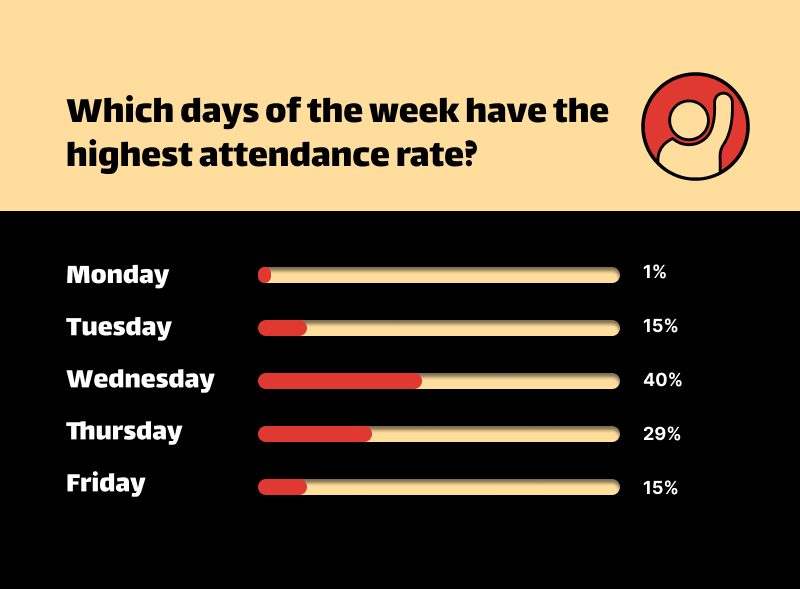3 Surprising Takeaways from the B2B Webinar Benchmark Report

Maximize Your Marketing ROI
Join 10,000 other marketers already getting the best tips on running engaging events that boost pipeline and create raving fans.
For our first-ever B2B Webinar Benchmark Report, we pored over data spanning 900 webinars and 100 different B2B brands. The info included over 370,000 webinar registrations and more than 118,000 attendees.
Whew! That's a lot of data!
The cool thing is that so much of what we learned bore out our own experiences here at Goldcast. We've put on over 100 digital events ourselves in the last two years alone. We've found this journey fascinating and started to spot some trends—which is why we got inspired to compile everything into a handy report to share with all of you.
📈 Want to get the full report and follow along with our takeaways? Download it here!
Today, we're stoked to share three of the "hottest takes," if you will, from our report. These are conclusions that made us look—or think—twice and have helped us shift our own webinar strategy.
Let's get to it!
Takeaway #1: Don’t use “webinar” in your title
Someone once opined, "A rose by any other name would smell as sweet," which is just a Shakespearean way of saying that names don't matter.
Spoiler alert: That is not true for webinars!
What you name your webinar can actually have a huge impact on the number of people who sign up and attend. In fact, using the word "webinar" in your title was associated with a 50% drop in registration!

This one really surprised us. It's so easy and straightforward (and seems almost intuitive) to use the word "webinar" to describe your webinars.
However, when we thought about it more, we realized this made sense. People are tired of Zoom events and online meetings. They're burned out; they want to log off. If they see the word "webinar," they might immediately think of Zoom fatigue and hit the "close tab" button.
All this means is that we just have to be more creative! When people see our event title, we need their first feeling to be one of excitement or intrigue, not exhaustion and resistance. One way to get started with brainstorming titles is to ask yourself what you want people to walk away with and then center your naming process around that.
💡 If you could use some creative inspiration, check out our post on how to come up with fun webinar titles!
Takeaway #2: There’s no such thing as an “ideal” day or time to host a webinar
Once you've named your webinar, it's time to schedule it—so, is there a "best" day and time to put it on the calendar?
The short answer is no. There are, however, some patterns to be aware of.
We've found that most organizers typically schedule their events for Tuesdays, Wednesdays, and Thursdays.

Most events are scheduled for Wednesday, smack dab in the middle of the week. This might be a strategy to make sure that people have gotten a chance to kick off their work weeks and get in the flow before attending the event while also accounting for people who are off on Fridays.
Since most webinar scheduling follows the pattern above, it makes sense that the day of the week with the highest attendance rate is also Wednesday, followed by Thursday, Tuesday, Friday, and a distant Monday.

You could interpret this data one of two ways:
- You might decide to stay on track with the majority and schedule your events for Wednesdays or the day directly before or after.
- Or, you can try to break away from the pack and schedule events for Mondays and Fridays, knowing that most events won't conflict with these dates.
As far as what time to have your event, your ideal time will depend on what time zone the majority of your audience is in. If you have a large group of people tuning in from the West Coast of the United States, for example, you probably don't want to set your event time to be late at night for them.
As a general rule, we recommend avoiding early mornings and late afternoons, as these times can be tricky for people to maneuver around, schedule-wise. Beyond that, try experimenting to see what works well for your audience. Maybe lunchtime meetings do really well for you, or perhaps that 6 PM slot is your magic target.
Takeaway #3: Smart marketers are moving from registration numbers to attendance rates, and it shows
Webinars are all about quality, not quantity. While it can be tempting to focus on getting your registration numbers up, up, up, it makes more sense, in the long run, to focus on getting the right people to your events.
With the right folks in attendance, your engagement with them will be more meaningful, you'll drive more conversions, and they'll spread the word about your brand to their networks, who are also likely in your target audience.
In our report, we saw that the average number of registrants per event came in at around 257, and around half of those people actually showed up—so, 129 attendees per webinar. Given those numbers, the average attendance rate across all Goldcast webinars was just a little over half, at 51%. That might sound less-than-ideal, but it is, in fact, quite high for industry standards!

This is another reason it's critical to focus on getting the right people; if you're just looking for people to register, you run a high risk they won't attend when it comes time for the actual event.
This gives you a couple of things to keep your eye on:
- Reaching the right people and encouraging them to sign up for your events
- Expecting about half of the registrants to actually attend
We said it already, but it bears repeating: Quality > quantity! If you're only looking at registration numbers, this can quickly turn into a meaningless vanity metric. You need the context of attendance and other metrics like leads, pipeline, and revenue to really understand if those registrations are valuable.
Webinars are here to stay—so what can you learn about them?
Digital events aren't going anywhere, so it makes sense to learn as much as you can about webinars so you can grow your webinar programs and remain competitive. To get up to speed, check out Webinar Week, a free series where we share behind-the-scenes tips we’ve learned after hosting more than 100 digital events.

Transform Your Video Marketing with AI
Stay In Touch
Platform
Resources
© 2025 Copyright Goldcast, Inc. All rights reserved.





 Upcoming Events
Upcoming Events Event Series
Event Series On-Demand Events
On-Demand Events

